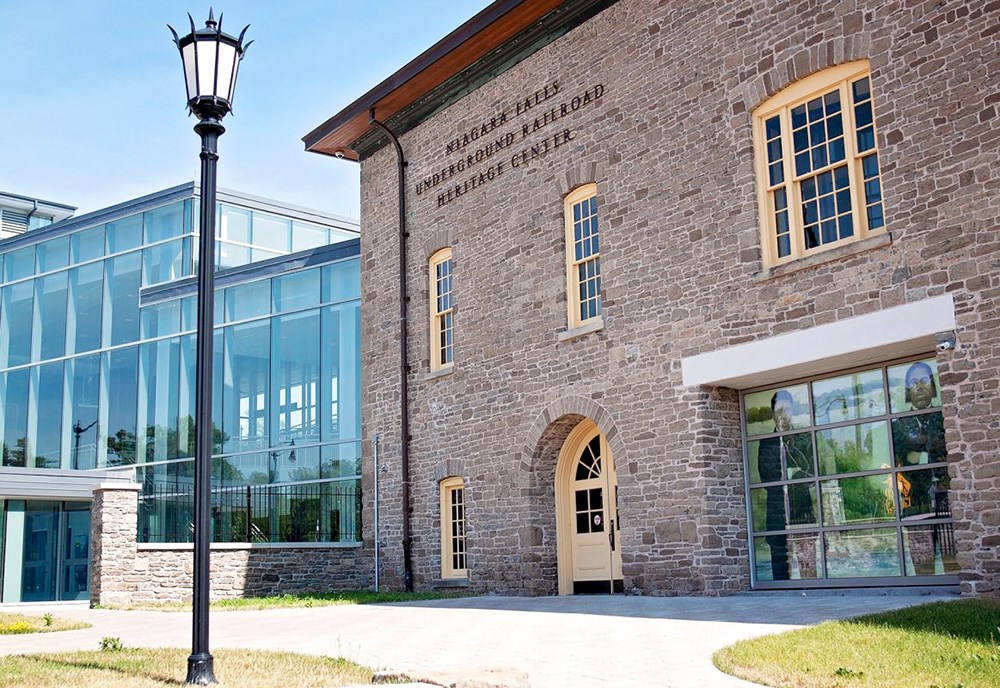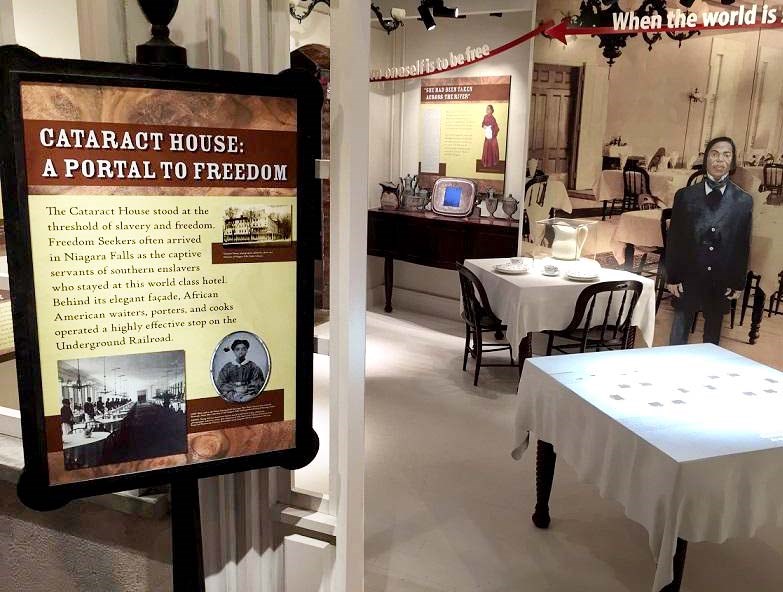Last updated: October 15, 2018
Article
History and Social Justice – Niagara Falls Underground Railroad Heritage Center
October 15, 2018 || Posted by: F. Calarco (NERO) –
The Niagara Falls Underground Railroad Heritage Center opened its doors for the first time to visitors in May 2018. Working in conjunction with the Niagara Falls National Heritage Area to share the stories of border crossings related to the Underground Railroad, the heritage center highlights the narratives of freedom seekers and American History.
Several decades in the making, the road to opening the heritage center began 30-40 years ago when community members in Niagara Falls began uncovering untold family histories relating to the Underground Railroad. The Underground Railroad Heritage Commission was eventually formed and began the process of using these stories to form a heritage center by creating a management plan. A shared staffing agreement was also created with the Niagara Falls National Heritage Area to provide the means of creating and managing the center’s exhibits.
Now located in the former 1863 U.S. Custom House attached to the new Niagara Falls Amtrak Station, the heritage center uses its new space to highlight the narratives of freedom seekers, including the stories of the Cataract House Hotel. The second largest hotel in Niagara Falls during the 1800s, the elegant Cataract House was visited by a number of European dignitaries and Southern slave-owners. The head waiter, John Morrison, coordinated his staff to operate as secret agents of the Underground Railroad. Able to hide in plain sight, the wait staff assisted a number of freedom seekers cross the border into Canada.
The Niagara Falls Underground Railroad Heritage Center opened its doors for the first time to visitors in May 2018. Working in conjunction with the Niagara Falls National Heritage Area to share the stories of border crossings related to the Underground Railroad, the heritage center highlights the narratives of freedom seekers and American History.
Several decades in the making, the road to opening the heritage center began 30-40 years ago when community members in Niagara Falls began uncovering untold family histories relating to the Underground Railroad. The Underground Railroad Heritage Commission was eventually formed and began the process of using these stories to form a heritage center by creating a management plan. A shared staffing agreement was also created with the Niagara Falls National Heritage Area to provide the means of creating and managing the center’s exhibits.
Now located in the former 1863 U.S. Custom House attached to the new Niagara Falls Amtrak Station, the heritage center uses its new space to highlight the narratives of freedom seekers, including the stories of the Cataract House Hotel. The second largest hotel in Niagara Falls during the 1800s, the elegant Cataract House was visited by a number of European dignitaries and Southern slave-owners. The head waiter, John Morrison, coordinated his staff to operate as secret agents of the Underground Railroad. Able to hide in plain sight, the wait staff assisted a number of freedom seekers cross the border into Canada.

Niagara Falls Underground Railroad Heritage Center
Many of these stories were pieced together with careful research from historic articles, documents, and the Cataract House registers. Without photos, the heritage center sought to bring the Underground Railroad agents to life in a visually engaging way by working with illustrator E.B. Lewis, who created watercolor illustrations of the wait staff.

Niagara Falls Underground Railroad Heritage Center / E.B. Lewis
Ally Spongr, Director and Curator of the Niagara Falls Underground Railroad Heritage Center, stated, “Our mission is to connect memory to action, past to present. We want people to find those connections through their own lives, experiences and perspectives so that they can speak to the larger concept of freedom. We also want our visitors to know that the struggle for freedom did not end in 1865 at the end of the Civil War, it continues today in a variety of forms and in many different ways across the globe. No one is free until we are all free. We want to inspire our visitors to take action, no matter how large or small in their own lives, to help others be free as well.”
In addition to facilitating discussions, the heritage center has also worked on social justice projects in collaboration with other organizations. The center hosted a voter registration drive in partnership with the League of Women Voters. They hosted an event with the Jewish Relations Council of Buffalo, the Jewish Federation, and True Bethel Baptist Church. Since the opening, two Holocaust survivors visited the space. The heritage center also offers free membership to the residents of Niagara Falls, ensuring that community members have access to their local history.

Niagara Falls Underground Railroad Heritage Center
